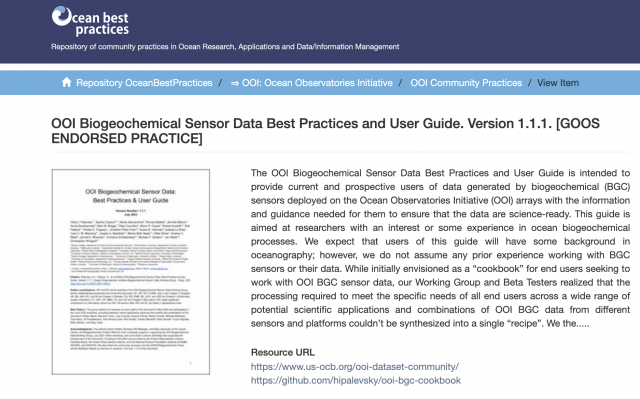Biogeochemical Sensor Data Best Practices and User Guide Now Available
The Global Ocean Observing System (GOOS) recently endorsed a finalized guide on how to use data generated by biogeochemical (BGC) sensors deployed by the Ocean Observatories Initiative (OOI).
The OOl Biogeochemical Sensor Data Best Practices and User Guide is intended to provide current and prospective users of data generated by BGC sensors deployed on OOI arrays with the information and guidance needed for them to ensure that the data are science ready. The guide is aimed at researchers with an interest or some experience in ocean biogeochemical processes. The guide was written with the assumption that its users would have some background in oceanography but not necessarily any prior experience working with BGC sensors or data they collect.
The guide was created by a 25-member Working Group, with input from 14 Beta Testers who joined the Working Group members for a June 2022 workshop. The draft version of the guide was revised based on Beta Tester feedback, and then circulated for open review by the full scientific community. The finalized guide, incorporating feedback from the open review process, was then endorsed as a best practice by GOOS after this rigorous review.
“We are delighted that our endeavor to make BCG data more broadly usable and accessible to the oceanographic community has been endorsed by GOOS,” said Hilary Palevsky of Boston College and a co-leader of the working group. “This has been a true team effort to develop best practices that will be broadly useful for the community and has demonstrated the importance of broad collaboration. We look forward to this guide enabling new science bringing in new users of OOI BGC data.”
Download the BGC Sensor Data Best Practices Guide.


